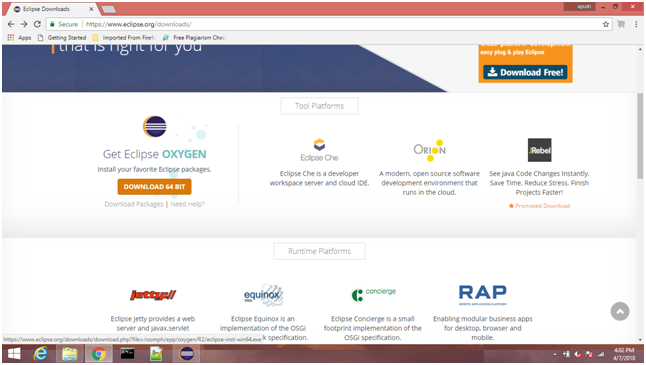

- ECLIPSE HOW TO INSTALL INSTALL
- ECLIPSE HOW TO INSTALL UPDATE
- ECLIPSE HOW TO INSTALL CODE
- ECLIPSE HOW TO INSTALL LICENSE
- ECLIPSE HOW TO INSTALL DOWNLOAD

In the Add Library window, click on the "ArcObjects Library" option, and then click Next. In the project properties window, click on "Add Library.". Open the project properties by right-clicking on the project folder in Eclipse and clicking on Properties. Navigate to the appropriate project folder and add project in Eclipse.
ECLIPSE HOW TO INSTALL CODE
We strongly recommend that you follow the steps below for adding the ArcGIS Enterprise SDK library to avoid various code compilation issues and extension export issues.Ĭlick "File" -> "New" -> "Java Project" menu item, to create new Java project in EclipseĬlick "File" -> "Open Projects from File System" -> menu item, to open an existing Java project in Eclipse.
ECLIPSE HOW TO INSTALL INSTALL
Once you install ArcGIS Enterprise SDK, you can find the ArcGIS Enterprise SDK Java library at \\java\tools\arcgis-enterprise-sdk.jarįor documentation related to the ArcGIS Enterprise SDK Java library refer to ArcGIS Enterprise SDK JavaDoc section of this help document. The ArcGIS Eclipse plugins are now installed in your Eclipse IDE.
ECLIPSE HOW TO INSTALL LICENSE
Read and click the "I accept the terms in the license agreements" option button to accept the Esri license agreement.

The Palette plugin is not required for developing ArcGIS Extensions such as Server Object extension and server object interceptor
ECLIPSE HOW TO INSTALL UPDATE
Select the update site you just added from the "Work with" drop down list.Įxpand ArcGIS plugin and select Esri ArcObjects. Select the plugin and click Uninstall.Ĭlick "Add…" to create a local update site.Ĭlick "Local…" and browse to the \/java/tools/eclipse_plugin/arcgis_update_site/arcobjects folder. Uninstall the Esri ArcObjects plugin if it's listed in the "Eclipse Installation Details" dialog. Click on the "What is already installed?" link in the lower part of the Install wizard: Step 1: Uninstall existing ArcGIS plugins:Įnsure that the "bin" folder in JDK (Version 1.8.0_191 and above) is added to the PATH environment variable.Ĭlick "Help" menu -> "Install New Software…" menu item.Įnsure that no ArcObjects plugins are installed. The following will walk you through installing the ArcGIS Eclipse plugin: To install the Eclipse IDE from the Eclipse Web site, see Eclipse Downloads and install the supported version of Eclipse. This applies to both the ArcObjects Java SDK and the ArcGIS Enterprise SDK. Just close and reopen Eclipse after you’ve installed an SDK. Note: If you already have the ArcGIS Eclipse plugin imported into your copy of the Eclipse IDE, you don’t need to import the plugin when you install a new ArcGIS SDK.

ECLIPSE HOW TO INSTALL DOWNLOAD
If it is not listed, try to download by clicking the link “Download additional server adapters”. Once you have clicked the “Add”, you will be presented with the list of server types supported by the Eclipse. Click on the “Add” button to add new server instance. You can configure the as many as servers within your eclipse instance. Navigate to Windows -> Preferences -> Server -> Runtime Environments to open the window for listing the configured runtime environments. Here I have added the screenshots to add server for more clarity. Eclipse itself supports the multiple server adapters to easily integrate the server by just location the server installation directory. One of the greatest advantage of using the IDE’s like Eclipse is that developers can use the server instances inside the editor itself without leaving the Eclipse environment. This example illustrates how to add the server instance using the server wizard in Eclipse.


 0 kommentar(er)
0 kommentar(er)
